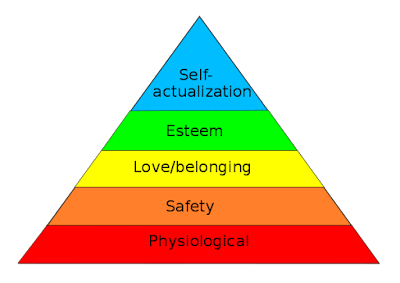The Risk You Fear Is Usually Different From The Risk That Can Really Hurt You
Every day, we take on risks. Some of these risks are so common that we no more see them as risks. Whenever you drive to your workplace, there is always a risk – no matter how low – of an auto accident.
But how many people think of this risk? Very few. There are some other risks we often fear. We think about those risks constantly. In fact, these thoughts lead to full blown worry.
Many times, your fear is probably misplaced because some risks are actually exaggerated but affect a very small percentage of people. There are some risks however, that are more dangerous but that we place little attention to.
This is due to the fact that most of risk assessment is done by your subconscious. Most of these decisions are made in a twinkle of an eye.
For instance, when you see a car speeding off the road and coming towards your direction, your subconscious tells you to find a way out. You don’t have to start thinking consciously because that may lead to your death.
You don’t have to start guessing. Maybe the driver was just trying to scare you and will stop the car. Maybe the car was just trying to do a fast parking. You don’t think about all these. You just jump out of the way.
This is because everything you have ever seen that looked like that led to ugly scenes. Your subconscious is fast to tell you that this could be a potential disastrous accident.
Your subconscious serves as a database to go to. The problem with the subconscious however, is that it can also store fake information. And it can feed this fake information to you when you need to make a decision.
Perceptions are built on such information. There is a high chance that if the media has been parading a wrong information about a particular risk, you probably believe it too. This can lead to the phobia of the wrong risks.
To have a chance of knowing the right risk to be afraid of, you need to make your risk assessment a conscious effort.
Let me ask you: if you were taking a young child to a house where your host has a gun or a house where your host had a swimming pool but no gun, where will you be more comfortable?
In the popular book Freakonomics by Steven D. Levitt and Stephen J. Dubner, they talked about how parents are very uncomfortable having their children go to houses where the owners had gun.
Unsurprisingly, they have no problem having their child go to a house with a swimming pool. Statistics have shown that many more children die through drowning in a swimming pool than accidental discharge of a gun.
This means what most parents see as the risk is not the real risk that could harm their children. They should have been more fearful of the house with the swimming pool.
The problem is that your subconscious will have a problem trying to justify swimming pool as the more prolific killer than a gun. The first thing is that your subconscious has never seen a gun being used for anything other than destruction or killing.
Meanwhile, most of the images you have about a swimming pool is that of people having fun. There are rare images you have seen of a swimming pool actually killing someone.
The idea of a swimming pool being a killer is not popular with your subconscious. Which is why you tend to be more sceptical of a house where the owner has a gun.
What of travelling in a car versus in an airplane? Until recently, most people believed air transport was much riskier to life than road transport. This could be because whenever there is a plane crash, it is world news.
You listen to reactions about the crash for days. Your subconscious also has that data. Meanwhile a car accident would get low or no publicity unless a celebrity was inside it.
It is easy for your subconscious based on the data it has, to conclude that air transport is more dangerous than road transport.
Research has shown that this is a misconception. Air transport is safer than road transport.
Your subconscious can make it easier for you to fear risks that are not really risks but neglect risks that are real and harmful. When you believe these illusions about risk, it can inform some of the actions you take.
You waste you energy to prevent a risk that had a low probability of happening but leave the real problem alone.
When many people assess their social media usage, they make a conclusion that it was excessive. But they cannot reduce their usage they say. They say they would lose contact with their friends, family and business partners.
To them, this is a high risk. The risk of losing contact with people. But is it the risk you should be afraid of?
When you spend 4 hours every day on social media, does it really improve the quality of your relationships? What is a bigger risk you should consider?
The risk of wasting the most precious currency of all: time. Except you’re landing business on social media regularly – which very few people are doing – then you should be more afraid of the risk of wasting your time.
When you waste your time, it means you’re wasting your life. Have you ever asked a conscious question: does social media make you the best at anything except at the use of social media?
Can you cultivate your best friendship solely on social media? Are the best business people always on social media chatting away? Are the best professionals heavy users of social media?
What business do you do? Are the best in your field the heaviest users of social media? Maybe you’ll say yes if you’re a social media expert but I doubt it otherwise.
But how did we come to believe the narrative of social media being the avenue for the best connection? It is a popular idea propelled by the media itself. It is an idea your subconscious has listened to many time and now believe to be true.
The only way of assessing those two risks of losing contact with people and losing time is by a conscious analysis.
What if you want to write an exam in two months time? What are you more afraid of? Getting sick and being unable to write the exam, or going into the exam hall underprepared?
The bigger risk is that of under preparation but your subconscious will probably argue. Very few people fall sick on the day they have to write an examination but many people go into the examination hall without adequate preparation.
Inadequate preparation will likely lead to the failure of that exam than you falling sick on the day of the exam. If you assess those two risks properly and place your fear in the right place, you begin to prepare for your exam even though it is two months away.
What of a shark attack versus crossing a road? Which looks more risky? Of course you may be tempted to say shark attack, but there is a much higher probability of getting hit by a car while crossing the road than being attacked by a shark.
Between 1958 and 2016, 439 unprovoked attack by Sharks were recorded which makes about 8 fatal attacks per annum. In 2015 and 2016, there were 233 and 265 fatalities from crossing collisions respectively. There were 728 fatalities in 1981.
This means you should be more scared of crossing the road than getting attacked by a shark.
Between 1958 and 2016, 439 unprovoked attack by Sharks were recorded which makes about 8 fatal attacks per annum. In 2015 and 2016, there were 233 and 265 fatalities from crossing collisions respectively. There were 728 fatalities in 1981.
This means you should be more scared of crossing the road than getting attacked by a shark.
Dr. Sandman while speaking to the New York Times said: “The risks that hurt people and the risks that upset people are almost completely unconnected.”
What are the risks you are afraid of? Are they the most likely to harm you? These are important questions to answer as it affect your daily decisions.
What are the ways you can assess your risks to know your subconscious has not been playing tricks on you?
1. Access your risks consciously
Most of the mind-sets we have about the risks we are exposed to has been suggested to us unconsciously. Being conscious gives you a better hold on whether your fears are real or fabricated.
Running a decision through your mind consciously makes you see all its sides and you are able to see the risk for what it is really worth. Please disregard this if you see a car running towards you at high speed.
2. Ask questions
When you make decisions about risks to fear, do you throw questions at it? Or you think if it’s coming from your subconscious, then it must be right?
When you think a risk is really worth your attention, ask questions. For instance in the case of a child going to a house where the owner has a gun, you could ask how many children have been killed by accidental discharge of a gun.
Will the owner of the gun put it where your child can have an access to it? Answering these questions would give you an insight on the real state of that risk.
3. Seek Knowledge
Having knowledge about a risk could give you vital information that will reveal the real potential of that particular risk. Having knowledge about your business will give you insights on the major risks that you need to be wary of.
Having knowledge about time management will make you see the real risk involved in overuse of social media.
Conclusion
We face risks every day and we will continue to face risks. Our subconscious is a noble tool require to make fast decisions. But your subconscious is far from being perfect.
You will face risks and you will be afraid and it will inform your actions. You must bring the assessment of those risks to consciousness, you must ask questions that will reveal the right insights about those risks.
If you have benefited from this post, please share with your friends. To hire the writer of this blog for your content writing solutions, go HERE.
If you have benefited from this post, please share with your friends. To hire the writer of this blog for your content writing solutions, go HERE.








Comments
Post a Comment
I'll like to know what you think!